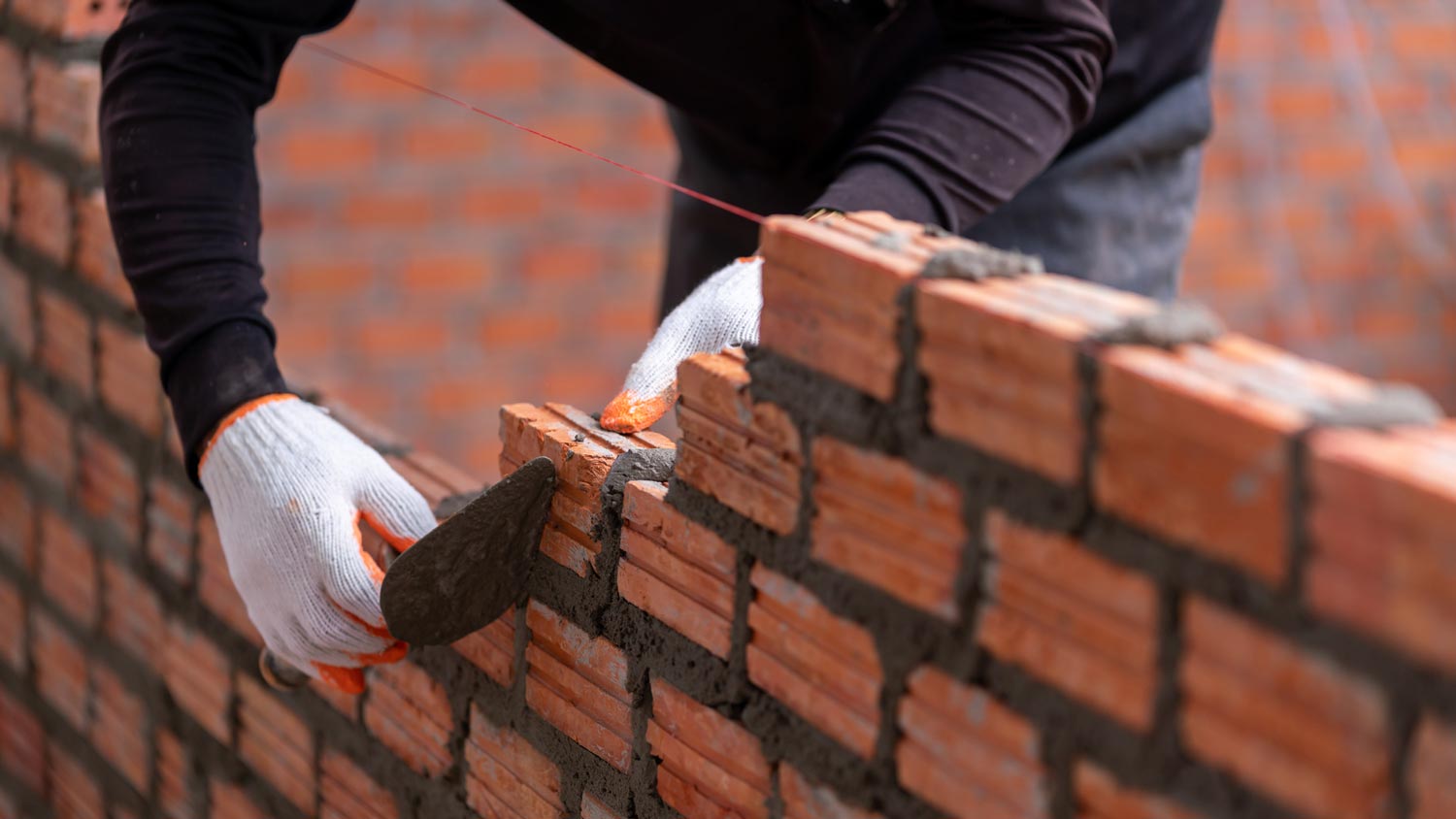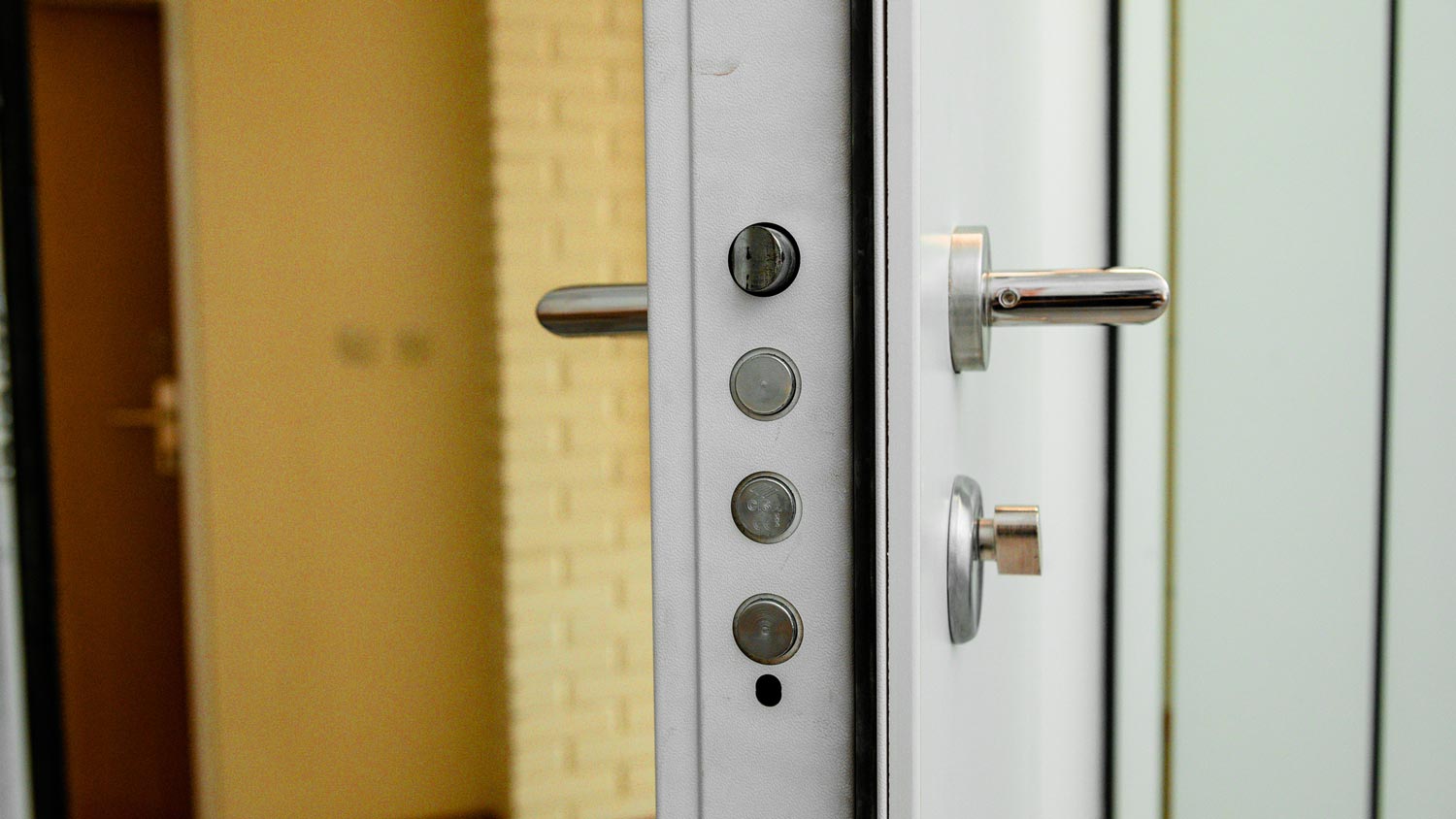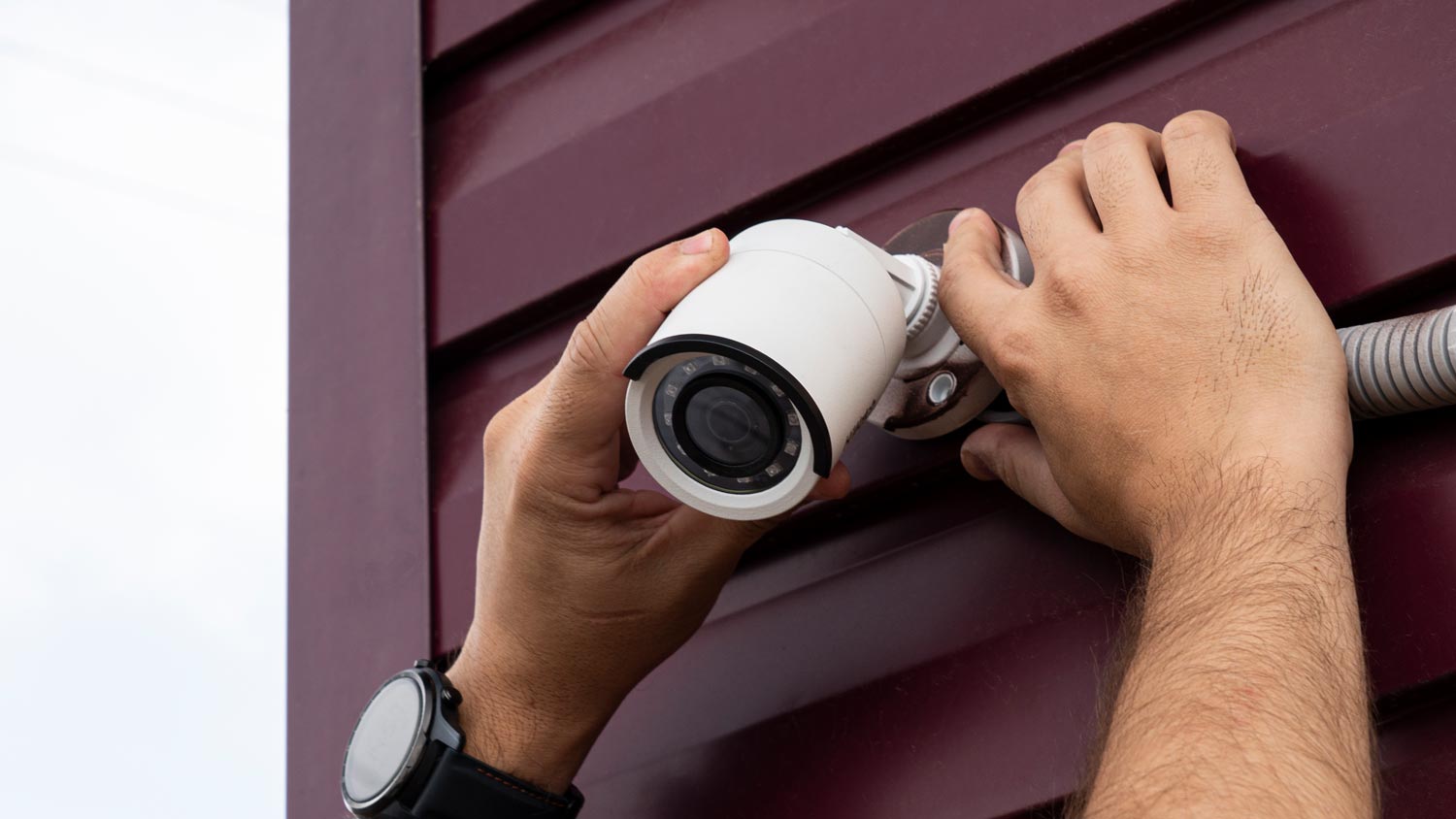
Feeling safe at home should always be a priority, and installing a new security system can help you do just that—no matter where you live.
Stop the spread of flames with this guide


Given the complexity of building a fireproof home, it’s a job best left to the pros.
New construction costs typically range from $137,100 to $523,400, and hiring professionals ensures the use of proper materials and fire-resistant design strategies.
Hiring a team to fireproof a pre-existing structure is more budget-friendly.
Installing a fire suppression system costs $2,000 to $8,000, and putting in a fire door costs $400 to $900.
These up-front costs pale in comparison to the potential expense of fire damage restoration, which can run as high as $48,500.
A house fire can turn from a small flame into a major burn in just 30 seconds. And in wildfire-prone regions, outdoor flames can travel over 14 miles per hour. But a fireproof house made with noncombustible and fire-resistant materials can slow the spread of flames and keep more of the structure standing after a disaster. Here’s why you should build a fireproof house and how to do it.
Fireproofing your home can give you extra time and protection during a fire. While you can take measures to minimize the risk of a big house fire, like installing a home fire sprinkler system and regularly testing your smoke detectors, fireproofing is a bigger undertaking. This is especially important for homes in areas prone to wildfires or brush fires.
According to the National Association of Home Builders, adding materials for a fireproof house adds $1,830 to $45,000 on top of the cost to build a house, which is about $137,100 to $523,400.
If you want to make an existing house more fire-resistant, installing a fire suppression system costs about $2,000 to $8,000, and installing a fire door costs about $400 to $900. These costs are worth the investment, as fire damage restoration costs $3,000 to $48,500.
If you’re shopping for roof shingles or decking, you’re likely seeing terms like noncombustible, Class A, or fire-resistant. These aren’t just marketing terms—each term is essential to understanding how a specific material will hold up to flames or if it will ignite at all.
Fireproofing is the process of building a home that’s more durable in the presence of fire. This process may involve building a foundation and walls with concrete, choosing nonflammable siding materials like stucco, or installing fire-resistant doors for each room of your home.
Fire protection is more about reducing how much impact a fire has on your home after it ignites, aka keeping the fire from spreading. A fire sprinkler system can stop a fire before it spreads from the stove to the entire kitchen, and a smoke detector can alert the family to use an extinguisher for a small fire or to evacuate during a larger fire.

Before you start working with an architect and home builder in your area to construct a fireproof house, familiarize yourself with some common terms you’ll come across when shopping for things like siding, insulation, and flooring.
Noncombustible materials won’t ignite or burn in the presence of fire. Masonry, like stone or brick, ceramics, concrete, and steel are all noncombustible materials to consider when building a fireproof house.
Fire-resistant products can slow the spread of a fire, but they’ll still ignite. They’re designed to withstand burning for a certain amount of time. For example, your walls may have a 1-, 2-, 3-, or 4-hour rating for fire resistance, indicating how long the walls can withstand fire. Fire-resistant materials are designed for safety and will give your family more time to evacuate in the event of a fire.
Materials labeled as fire retardant are treated with coatings that make them less flammable. You might consider fire-retardant coatings for deck lumber, electrical wiring, or furniture. However, the National Institute of Environmental Health Sciences warns that the chemicals in fire-retardant coatings for things we come into regular contact with, like furniture, may be linked to negative health effects.
A material’s class refers to its fire-resistance ranking according to the flame spread index (FSI). Materials include a Class A or I, Class B or II, and Class C or III rating.
Class A (I): 0–25 FSI, highly resistant to fire
Class B (II): 26–75 FSI, somewhat resistant to fire
Class C (III): 76–200 FSI, less resistant to fire
Concrete, stone, and brick are examples of Class A materials. Class B may include some types of foam insulation or wood treated with fire-retardant coatings. Class C material examples include untreated wood.
Now that you understand more about fireproofing terms, it’s time to work with your architects and builders to construct a fireproof house from the foundation and frame to the roof to the interiors.
Fireproofing a house starts with the foundation and frame. One of the most common ways to do this is using insulated concrete forms (ICFs). ICFs are polystyrene blocks filled with concrete for the highest fire resistance. The blocks connect to form the foundation and insulated walls, with a 4-hour fire-resistance rating.

You may dream of a garage to store your vehicle from harsh weather or as a place to stack bins of seasonal decor away for the year. While an attached garage is convenient, a detached garage could be safer in a fire. If you keep highly flammable items in the garage, like paints, cleaners, car batteries, or gas containers, it’s best to build the garage at least 30 feet from the house.
While ICFs can offer about four hours of fire resistance, they work best when covered with siding that won’t catch fire. For the best protection, opt for materials like stone, brick, stucco, fiber cement, metal, or concrete blocks.
If the roof material is flammable, flames can cause it to burn and collapse, putting you and your family in serious danger. Choose a Class A roof material for the best fire resistance. Some good options include metal, slate, concrete, and some types of tile. Check with your builder or roofing company to verify that your roofing material has a Class A rating and will withstand a fire.
Single-pane windows can be extremely dangerous during a fire. They can quickly crack or burst when a fire is nearby, and windows or skylights with wood or acrylic frames may burn or melt. Instead, choose double-pane windows, ideally with a layer of tempered glass, to better withstand fire and heat. Consider steel or aluminum window frames for the best fire resistance, and you may want to install fire-retardant window shutters for added protection.

Fire doors offer a fire-resistance rating of up to 3 hours to slow the spread of a fire and give you time to evacuate. They’re made with a metal core to withstand flames longer than a standard wood door. You can use fire doors throughout the home or just install them for bedrooms for better overnight protection.
Add fire-resistant wire mesh (⅛ inches thick) to cover areas where flames and embers could enter your house. Pay attention to areas on or around the roof, including gable and soffit vents, and openings like dryer vents. Alternatively, you can also install fire-resistant vents around your home.
Hire a local electrician to install fire-resistant electrical wiring in your home. They can install wires with fire-resistant materials or fire-retardant coatings to withstand flames for longer.
Wood decks are flammable, so when building a fireproof house, keep deck materials in mind. Finding the best deck material depends on your style preferences and budget, but you may want to go with fire-retardant wood, concrete, metal, or composite decks for better resistance to flames.

A yard full of dead leaves or dry grass can be a major fuel source for a spreading fire. While landscaping, plant trees and shrubs about 20 to 30 feet away from the house and space them this same distance from one another. For garden beds around the house, consider lining them with rocks instead of mulch. Clear out dead leaves and plants to minimize the presence of flammable materials in your yard.
Once your fireproof house is nearly complete, don’t forget to install a fire suppression system to stifle any flames that could break out. You’ll need to hire a fire sprinkler company near you to install sprinklers throughout the home and outdoor spaces. Add smoke and carbon monoxide detectors to every floor and in and outside bedrooms, and keep fire extinguishers in easily accessible spaces in your house.
Preparation against a fire is not a one-time event but an ongoing responsibility embedded in our lifestyle. Start now: Create a solid defense perimeter around your home—a 5-foot minimum clearance, free of flammable vegetation, isn't just suggested—it's crucial.
To ensure your home’s fireproofing materials will keep you safe, keep up with regular maintenance tasks to minimize fire risks. These tasks include:
Scheduling electrical inspections: Hire an electrician to inspect your electrical system every five to 10 years.
Inspecting windows: At least once per year, check for cracks in windows that could create a vulnerability in a fire. Replace any damaged glass as needed.
Testing smoke detectors: Every month, test the smoke detectors around the house. They may chirp if they need fresh batteries, which you should change out at least annually.
Clearing outdoor brush: Keep your outdoor areas clear of dead plants and other organic matter that can fuel a fire.
Trimming trees: Prune tree branches, keeping them to about 8 to 10 feet.
Cleaning ducts: Clean your air ducts at least once per year to remove any flammable debris from building up.
Confirming your insurance coverage: Make sure your homeowners insurance policy includes coverage in the event of a fire.
From average costs to expert advice, get all the answers you need to get your job done.

Feeling safe at home should always be a priority, and installing a new security system can help you do just that—no matter where you live.

Discover true smoke detector installation costs. Learn about average prices, cost factors, and tips to save on your smoke detector installation project.

Motion-sensor lighting costs vary greatly because they have so many customizations available. Learn more by using this cost guide about motion-sensor lights.

From your desired timeline to how many cameras you need repaired or installed, prepare to talk to a pro about these important surveillance camera questions.

Do security system signs really deter burglars? They might help, but fake security signs can get you in some legal trouble. Find out how to best use security signs and other top security measures to help prevent a burglary.

Here are the most common types of home security cameras, from indoor to outdoor. This article will help you decide what security camera is best for you.